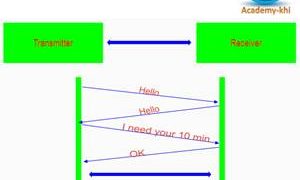RAM Random Access Memory
It is a type of memory and store data. A processor can access its individual memory cell in any sequence.
It is:
- Volatile memory.
- Temporary memory.
- Primary memory.
We have already discussed volatile, temporary memory and primary memory in a video Storage devices.
RAM function.
In order to run a program, all information is copied from hard disk to RAM. Processor access the RAM to get required information.
RAM Types.
we can discuss its types by two ways
- Circuit
- Physical construction
By Circuit
Memory is an electronic module.It is an electronic component. We can classify its circuit design in two categories.
SRAM = Static Random Access Memory
SRAM uses transistor circuits to store information bits. It needs 05 to 06 transistors to store 01 bit of information. It has complex circuitry and Consumes high power.It occupies large space. SRAM is no more in use.
DRAM = Dynamic Random Access Memory
It uses capacitors to store information bits. one capacitor is required to store one bit of information. A charged capacitor represent 1 and a discharged capacitor represent 0 bit. A capacitor can hold the charge only for a very small time. A continuous voltage pulse is required to keep the information.
By physical arrangement.
SIMM = Single inline memory module
It has 32-bit data bus and 72 pins.It is no more in use.
DIMM= Dual inline memory module
It has 64-bit data bus.It has 168,182,240 or 288 pins. DIMM has replaced SIMM.Now all available RAM are DIMM type in construction.
SO-DIMM
Small outline DIMM.It is designed for low space applications (Laptop).
Data Path.
A computer can process the information only in binary form 0 or 1. It is the minimum information unit that a computer can understand. A Data path is a measurement, how much data can travel in clock-cycle.
SIMM has 32-bit data path and DIMM has 64-bit data path.DIMM is faster than SIMM.
SDRAM.
It is synchronous Dynamic Random Access Memory. SDRAM operation is synchronized with system Clock-cycle. It is faster than Dynamic Random Access Memory.
DDR SDRAM.
It is double data rate.It is double fast than SDRAM. Data transfer on both edges of Clock-cycle.
DDR2,3,4
All these are further improvements in double data rate Dynamic Random Access Memory. They are more advance in
- Speed
- Power consumption
- Heat dissipation




